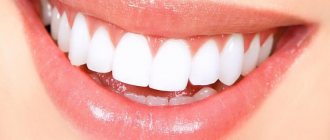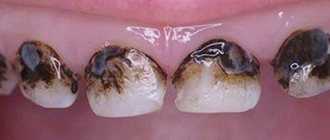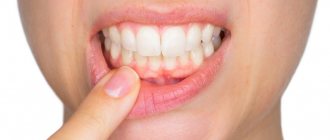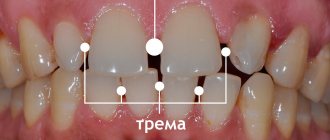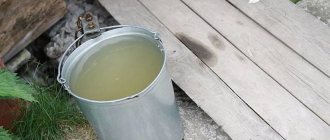Yellow teeth are a dental problem that adults often face. But you should know that the possibility of naturally having snow-white teeth is zero. The shade of skin, hair, eyes and teeth is formed from the birth of the baby, and you need to accept this as a fact.
Most of us think that a smile is naturally snow-white. But if you ask your dentist what shade healthy enamel should be, he will answer completely unexpectedly for our understanding - yellowish. And this is the truth.
Reasons for changing the shade of enamel
Conventionally, the reasons that teeth become yellow or dark can be divided into two main groups: external influences (food dyes, smoking, poor hygiene) and internal influences (health conditions, removal of the dental nerve, etc.). Let's look at them in more detail.
Nutritional Features
Quite often, the enamel turns yellow or darkens due to regular exposure to drinks and products that contain coloring pigments - coffee, tea, seasonings, chocolate, beets, etc. Coloring substances accumulate in the micropores of tooth enamel and dentin, which leads to a change in shade teeth.
Environmental factors
Tooth enamel can change its shade as a result of extremely poor ecology, when a person works in hazardous industries and consumes bad water, in particular, with a high fluoride content (white spots appear). Darker shades can form when the body is exposed to lead, bromine, mercury and other hazardous substances.
Hygiene factors
Poor oral hygiene leads to discoloration of teeth due to plaque formation. It occurs due to irregular, poor-quality cleaning or due to incorrectly selected products. As a result, the enamel becomes darker due to the accumulation of large amounts of deposits.
Age-related changes
Over the years, tooth enamel becomes thinner, through which darker dentin begins to show through. It is for this reason that yellow teeth appear in most people in old age.
Various diseases and their treatment
Another common cause of darkening of the enamel is diseases of the internal organs, as well as their treatment with certain drugs. The use of certain types of antibiotics, for example, tetracycline, leads to the appearance of dark stripes on the enamel (especially if it was taken during the formation of the child’s teeth during intrauterine development or their growth in the first years of life). With fluorosis, white spots may appear on the enamel, which over time become yellow-brown.
On a note! In the absence of the dental nerve (pulp), the tooth darkens over time - this is a completely normal and physiological process. Unfortunately, whitening is usually not effective in this situation, so it is worth considering the installation of veneers or lumineers.
If the tooth becomes red, this indicates damage or inflammation of the dental nerve, which requires surgical treatment by a dentist.
Bad habits
Smoking causes permanent plaque to form on the surface of the teeth, causing them to turn yellow. If you can’t give up the habit, you should strengthen your oral hygiene, as well as regularly carry out comprehensive professional hygiene at the dentist - every 3-5 months to better cleanse your teeth of plaque.
Localization of yellowness
Yellowish enamel is hard, so it can be difficult to remove. Below we will consider in which areas yellow deposits can be localized:
- Yellow plaque on the teeth at the roots. Among the obvious causes of the problem: smoking, dieting, injury. Age-related changes and the use of braces can also lead to yellowness at the roots.
- The formation of yellow plaque on the front teeth is also associated with smoking. Such deposits are the most noticeable. A dental hygienist can remove them. The front teeth are easiest to clean. Dentists use various methods to remove deposits.
- Deposits on the back surface. Formed during chewing of food. Removing yellow-white plaque on teeth is possible using modern dental cleaning techniques.
- "Morning" raid. It is easy to get rid of it if you regularly use a good paste every morning. Otherwise, it will cause caries.
- The appearance of yellow plaque on the tongue and teeth signals that it is time to check the condition of the gastrointestinal tract. If a strong coating appears on your tongue, you should consult a gastroenterologist.
- The formation of yellow plaque after tooth extraction - the appearance of plaque after tooth extraction could be triggered by either the surgical operation itself or the use of medications.
If you do not get rid of the yellow plaque in a timely manner, over time it will become more difficult to fight it.
How to get rid of yellow plaque on teeth
The most effective way to help get rid of unpleasant yellowness is professional cleaning using special dental equipment. Below we will consider what methods modern dental hygienists use:
- Ultrasonic cleaning. A highly effective way to remove hard deposits even in hard-to-reach places. The cost of removal using such a device varies from one and a half to three thousand rubles.
- Whitening trays. Capable of significantly brightening enamel. A professional doctor will determine how many shades it is advisable to lighten the enamel so as not to harm it.
- Laser whitening. The doctor applies a special whitening composition to the front teeth, which is then activated by a laser. It will take two minutes to treat one tooth. The doctor will tell you how many times you will need to do the procedure.
- Veneers. Their installation is used when you need to slightly adjust the color.
- Lumineers. These are special onlays that are placed on the front tooth surface. Great for whitening.
It may take a long time to remove heavy yellow plaque on teeth.
What to do if the white spot on the gum hurts?
If white spots on the gums hurt for a long time, you need to consult a dentist. If a visit to the doctor needs to be postponed for some time, you can alleviate the condition of the oral cavity in the following ways:
- refuse spicy and hot foods;
- rinse the mouth with herbal infusions (chamomile, calendula, oak bark);
- make mouth baths with antiseptics (chlorhexidine, miramistin);
- taking vitamin complexes.
You should not practice self-medication, because in this way you can aggravate the course of the disease.
Since one of the common causes of white spots on the gums is stomatitis, it is necessary to know all the stages of treatment for this disease.
- Brushing your teeth 2 times a day with medicated toothpastes (Asepta).
- Rinsing the mouth with herbal infusions at least 5 times a day (pharmacy chamomile, Rotokan).
- Oral baths 2 times a day after brushing your teeth (chlorhexidine).
- Inside - antimycotic or antiviral drugs (depending on the causative agent of the disease).
- Taking vitamin complexes.
- Applications with dental ointments (“Bonafton”, “Kamisad”).
What can you do at home?
If a white or yellow spot occurs, you can soothe the mucous membrane of the gums and eliminate unpleasant symptoms with the help of herbal rinses , antiseptic baths and applications with Metrogyl Denta .
Unfortunately, these methods will only help eliminate the symptoms of the disease for a while; the main cause of the pathological process is identified by the doctor, after which he prescribes effective treatment.
You should not ignore the appearance of a white spot in your mouth, because such a symptom may indicate a serious pathology.
If white spots on the gums have been hurting for a long time and no medications can eliminate the pain, it is not recommended to relieve discomfort in the oral cavity at home, since in such situations the special knowledge and experience of a dentist is required.
Only a knowledgeable specialist will be able to establish an accurate diagnosis and cure gums from white spots without complications.
Gum diseases
Sore gums and bleeding are quite common. What diseases are we talking about if we encounter similar symptoms?
Gingivitis
– inflammation of the gums with a superficial nature. The edge of the gum in contact with the tooth is mainly affected.
Periodontal disease covers a whole group of diseases of the periodontal region called periodontium. The main function of the periodontium is to hold the tooth in its socket. Such diseases, for example, include periodontitis - inflammation of periodontal tissue. In medical practice it occurs most often. Neglect of periodontitis leads to thinning of the periodontium and tooth loss.
What should I do if I have a similar but different question?
If you did not find the information you need among the answers to this question, or your problem is slightly different from the one presented, try asking an additional question to the doctor on the same page, if it is on the topic of the main question. You can also ask a new question, and after a while our doctors will answer it. It's free. You can also search for the information you need in similar questions on this page or through the site search page. We will be very grateful if you recommend us to your friends on social networks.
Medical portal 03online.com
provides medical consultations via correspondence with doctors on the website. Here you get answers from real practitioners in your field. Currently, on the site you can get advice in 48 areas: allergist, anesthesiologist-resuscitator, venereologist, gastroenterologist, hematologist, geneticist, gynecologist, homeopath, dermatologist, pediatric gynecologist, pediatric neurologist, pediatric urologist, pediatric surgeon, pediatric endocrinologist, nutritionist, immunologist a , infectious disease specialist, cardiologist, cosmetologist, speech therapist, ENT specialist, mammologist, medical lawyer, narcologist, neurologist, neurosurgeon, nephrologist, oncologist, oncourologist, orthopedist-traumatologist, ophthalmologist, pediatrician, plastic surgeon, proctologist, psychiatrist, psychologist, pulmonologist, rheumatologist, radiologist , sexologist-andrologist, dentist, urologist, pharmacist, herbalist, phlebologist, surgeon, endocrinologist.
What to do if the white spot on the gum hurts?
If white spots on the gums hurt for a long time, you need to consult a dentist. If a visit to the doctor needs to be postponed for some time, you can alleviate the condition of the oral cavity in the following ways:
- refuse spicy and hot foods;
- rinse the mouth with herbal infusions (chamomile, calendula, oak bark);
- make mouth baths with antiseptics (chlorhexidine, miramistin);
- taking vitamin complexes.
You should not practice self-medication, because in this way you can aggravate the course of the disease.
Since one of the common causes of white spots on the gums is stomatitis, it is necessary to know all the stages of treatment for this disease.
- Brushing your teeth 2 times a day with medicated toothpastes (Asepta).
- Rinsing the mouth with herbal infusions at least 5 times a day (pharmacy chamomile, Rotokan).
- Oral baths 2 times a day after brushing your teeth (chlorhexidine).
- Inside - antimycotic or antiviral drugs (depending on the causative agent of the disease).
- Taking vitamin complexes.
- Applications with dental ointments (“Bonafton”, “Kamisad”).
What can you do at home?
If a white or yellow spot occurs, you can soothe the mucous membrane of the gums and eliminate unpleasant symptoms with the help of herbal rinses , antiseptic baths and applications with Metrogyl Denta .
Unfortunately, these methods will only help eliminate the symptoms of the disease for a while; the main cause of the pathological process is identified by the doctor, after which he prescribes effective treatment.
You should not ignore the appearance of a white spot in your mouth, because such a symptom may indicate a serious pathology.
If white spots on the gums have been hurting for a long time and no medications can eliminate the pain, it is not recommended to relieve discomfort in the oral cavity at home, since in such situations the special knowledge and experience of a dentist is required.
Only a knowledgeable specialist will be able to establish an accurate diagnosis and cure gums from white spots without complications.
